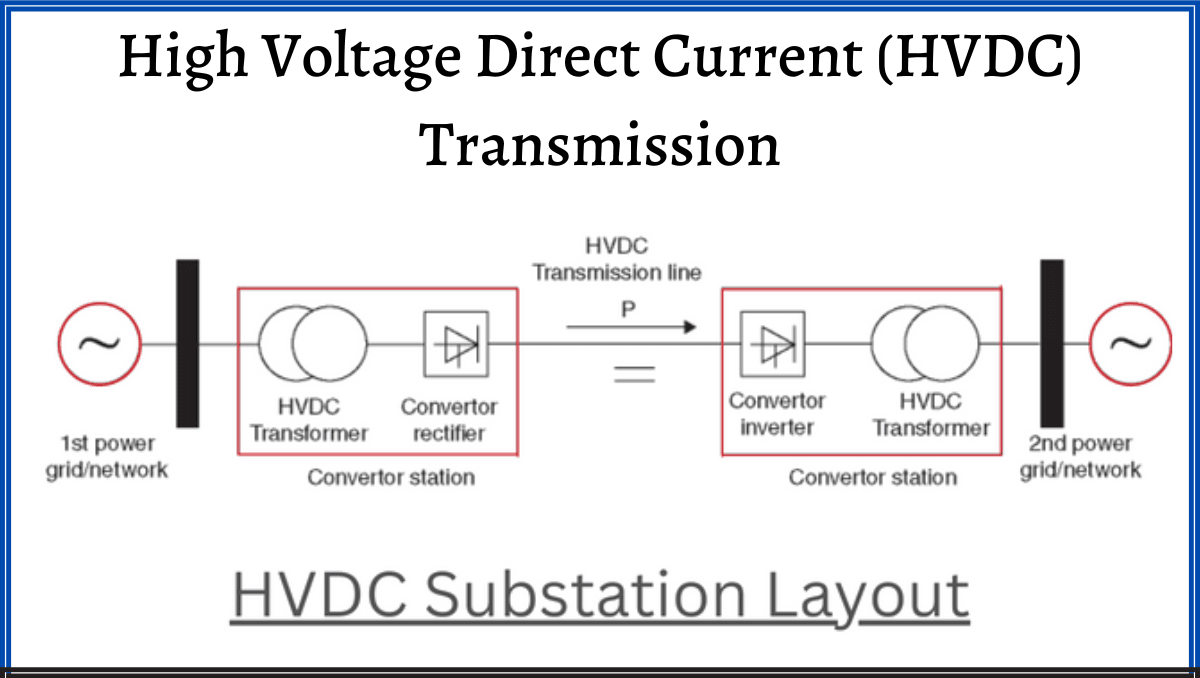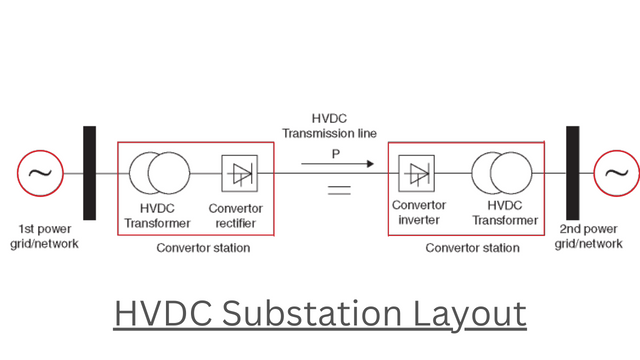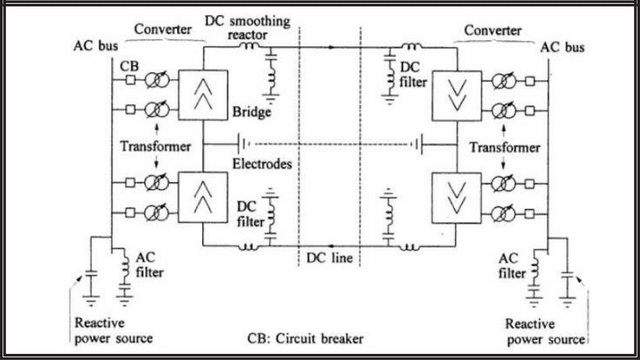
Table of Contents
HVDC Transmission
HVDC stands for High Voltage Direct Current. We know that the generating plant produces AC power. This must be converted first to DC. A rectifier is used to convert the AC power into DC power. The DC power will flow through the overhead transmission lines. This DC must be converted into AC at the user end. At the receiving end, an inverter is used for this function.
HVDC power system use DC for transmission of bulk power over long distance. It inter-connect the networks that have different frequencies and characteristics.
Read Also
Difference between HVDC and HVAC
How does HVDC transmission system works?
We know that the generating plant produces AC power. This must be converted first to DC. A rectifier is used to convert the AC power into DC power. Rectifiers and inverters are installed at both ends of a line in an HVDC substation or converter substation. The rectifier terminal converts alternating current to direct current, whereas the inverter terminal converts direct current to alternating current.
The DC flows through the transmission lines, and at the user end, the DC is converted back into AC by inverters located in the converter substation. Power is constant at both the sending and receiving ends of the connection. DC is used for long-distance transmission because it reduces losses and increases efficiency.

Two terminal DC systems are those that have two converter stations at both endpoints of a single transmission line. When there are two or more converter stations and interconnecting DC terminal lines, it is called multiterminal DC substation.
Read Also
Difference between HVDC and HVAC
Components of HVDC Transmission
The components of the HVDC Transmission system and their functions are discussed below :

Rectifier : A rectifier is used to convert alternating current (AC) into direct current (DC).
Inverter : A inverter is used to convert into direct current (DC) into alternating current (AC).
Smoothing Reactors : Each pole is formed of smoothing reactors, which are inductors connected in series with the pole. It is used to avoid commutation failures in inverters, as well as to reduce harmonics and eliminate current discontinuity for loads.
Electrodes : Actually, they are conductors that connect the system to the ground.
Filters : It is used to reduce harmonics in the voltage and current of the converters.
DC Transmission Lines : It can be cables or overhead lines.
AC Circuit Breakers : An AC circuit breaker is used to break the circuit. It was also used to disconnect the DC link.
Advantages of HVDC Transmission
- The HVDC system uses earth return.
- Their tower are less expensive and cheaper.
- It requires less clearance from phase to phase and ground to ground.
- Corona loss is less as compared to HVAC transmission.
- Less number of conductors is required.
- The DC link transmits very accurate and lossless power.
- It does not generate or absorb any reactive power. So, there is no need for reactive power compensation.
- Less insulation is required as compared to HVAC transmission.
- Power loss is reduced with DC because fewer numbers of lines are required for power transmission.
Disadvantages of HVDC Transmission
- Converters with small overload capacity are used.
- The HVDC link is extremely complicated.
- Power flow is uncontrollable.
- Due to the placement of converter substations at both the sending and receiving ends of the transmission lines, the cost has increased.
- HVDC uses circuit breakers for circuit breaking, which is also very expensive.






Leave a Reply